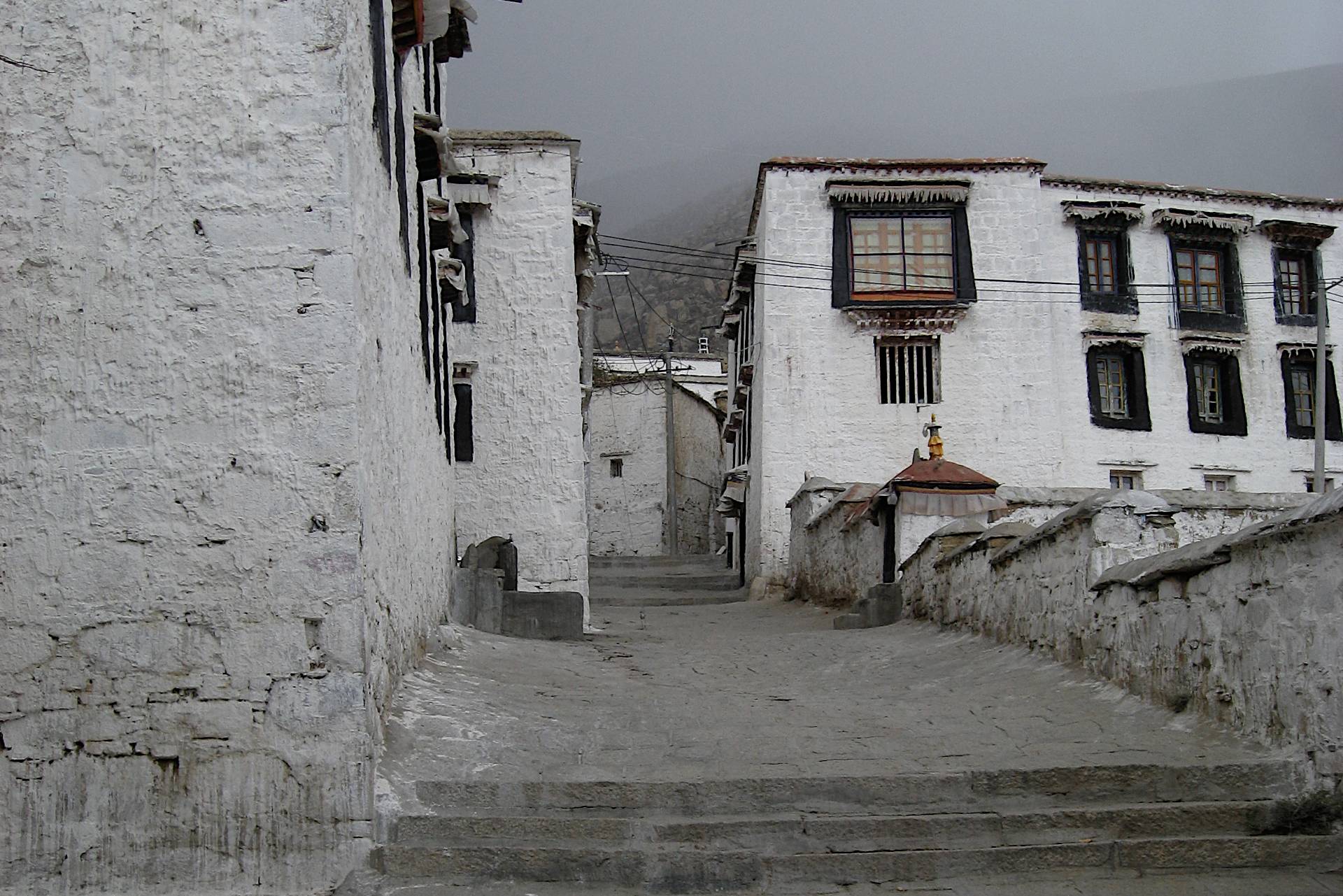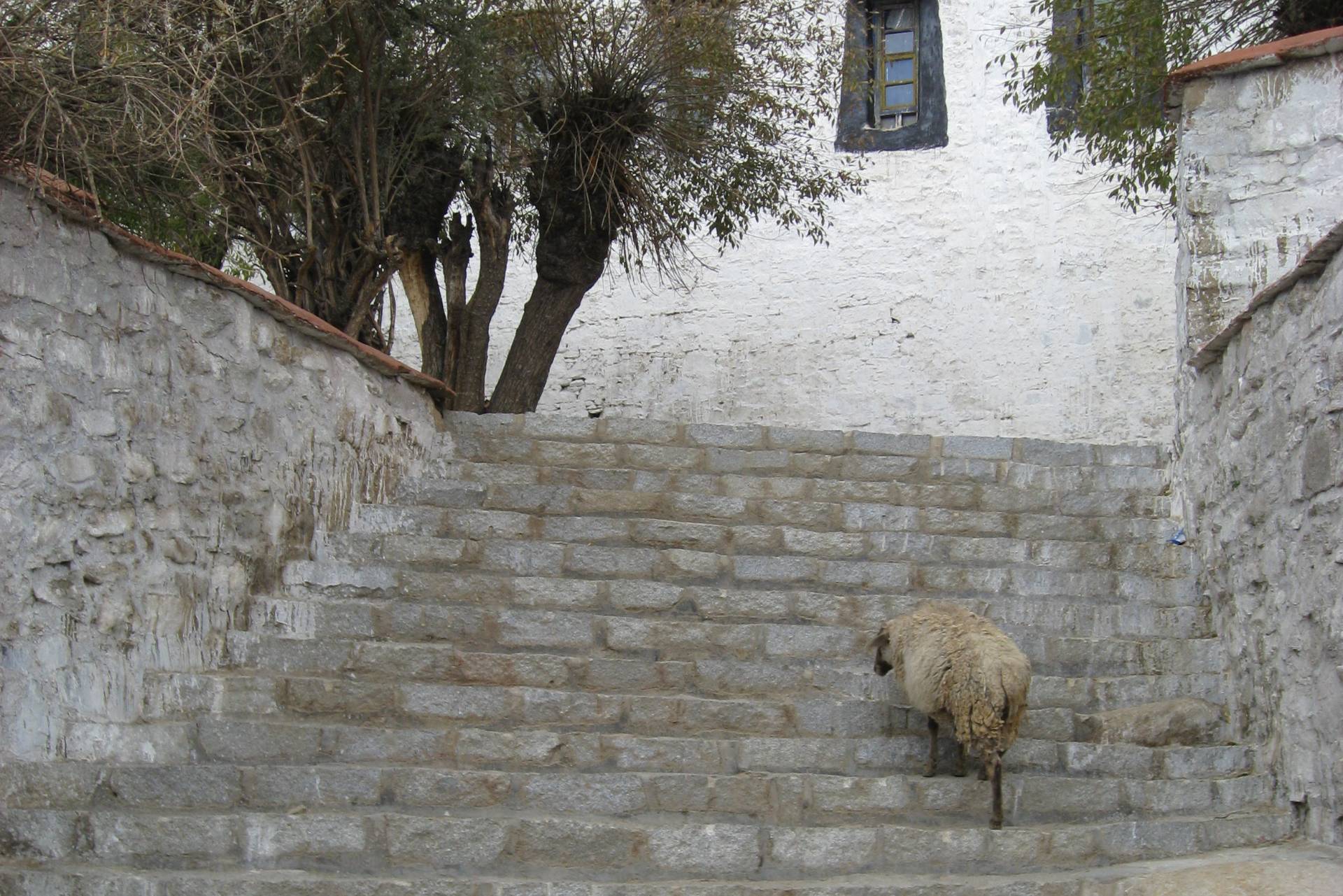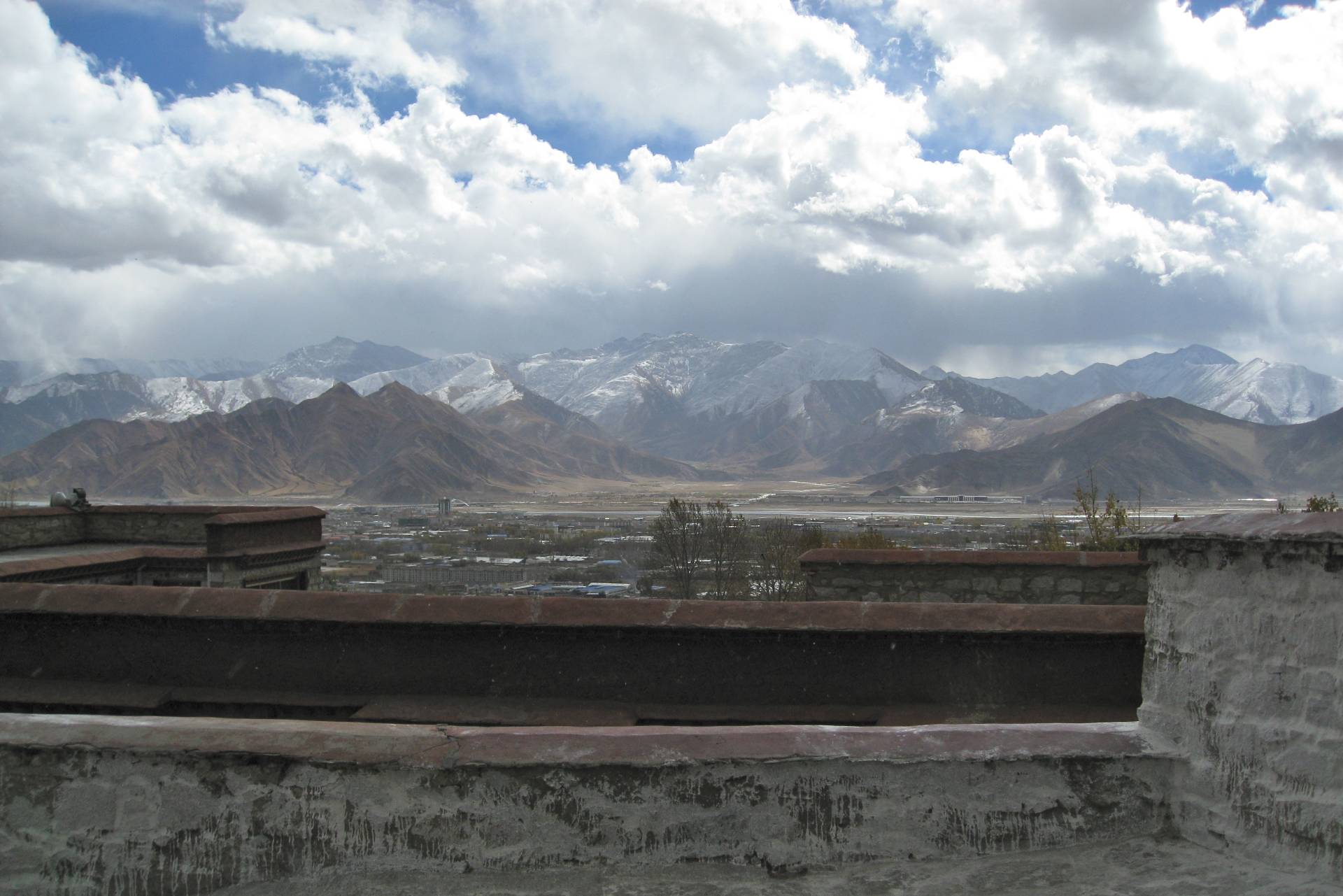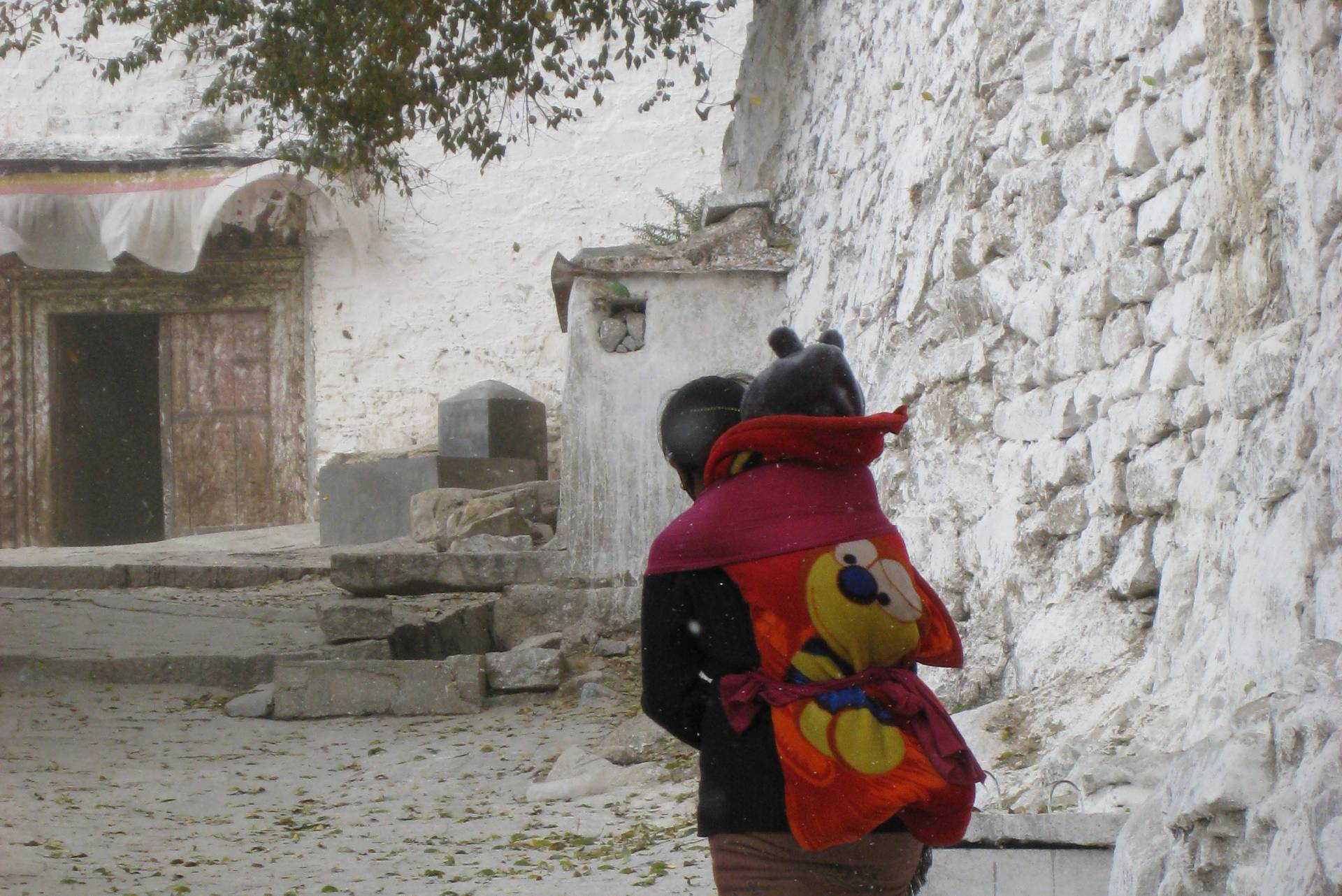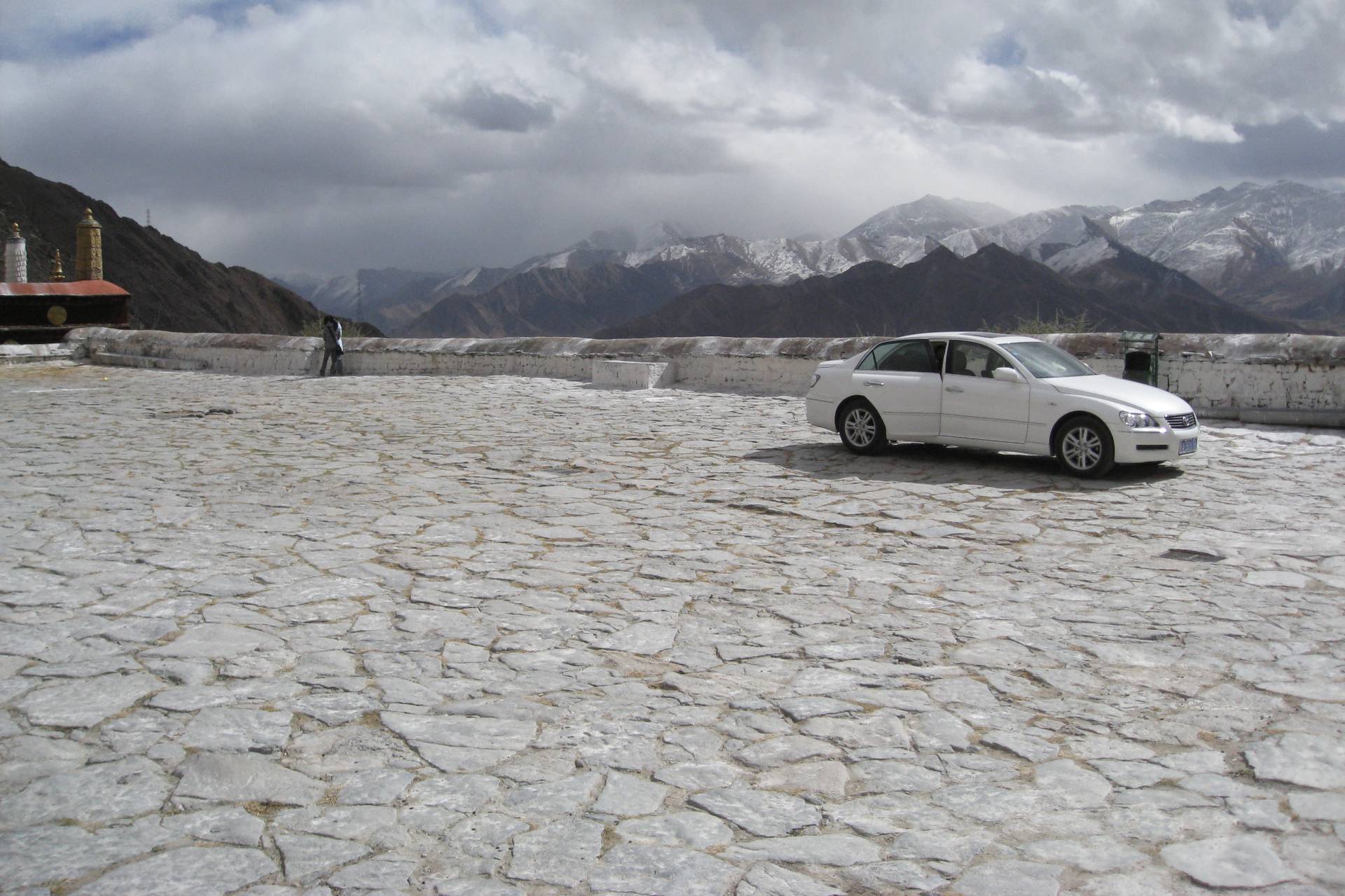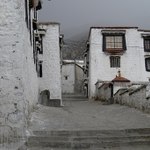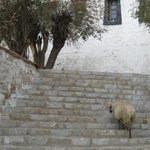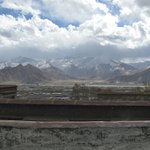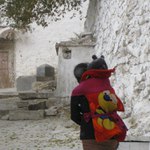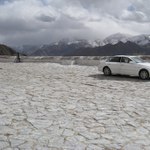Whiten Drepung
The smell of snow lay in the air when we arrived at Drepung monastery. It was a cold November morning. Trashi, a student I had befriended early on during my stay at Tibet University, had insisted on being my guide. He was proud of Drepung and its history. Before the 1950s, Drepung had a monk population of eight to ten thousand and was probably the world's biggest monastery. Its colleges were among the most highly reputed in the Tibetan Buddhist world.
Presently, Drepung has far fewer monks but remains a major attraction for visitors and pilgrims from around the world. When we arrived, however, we found the parking area, which was usually bustling with tour groups and vendors, empty and no monks could be seen. Without the red robes of monks and the multicoloured outdoor jackets of visitors Drepung appeared bare and white – startlingly white.
The whiteness, however, was not just a result of the cold and snowy November morning but an incident that had taken place a month earlier. The monks of Drepung have a reputation for being particularly unruly, and according to one of Trashi's monk friends this is what happened:
On 17 October 2007, the US congress bestowed the nation's highest civilian honour, the Congressional Gold Medal, upon the Dalai Lama. Authorities in Lhasa were extremely alert and made it very clear that they would not tolerate any public display of approval. The event coincided with the annual whitewashing of monastery buildings. The Drepung monks chose to start with the chapel of Avalokiteshvara, of which the Dalai Lama is considered to be an incarnation. This was apparently seen as an act of defiance. A quarrel between monks and monastery management ensued. The quarrel got out of control, the army moved in, and the monks were subjected to patriotic re-education. For several weeks Drepung remained closed to outside visitors.
When we heard that the ban had been partially lifted, we decided to try our luck. After some discussion with one of the guards about whether I qualified as resident or as tourist, he let us in. Apart from a couple of sheep and a white car that brought a small group of Tibetan pilgrims, the monastery seemed deserted. It started snowing again and we found refuge in the monastery kitchen. Lunch was ready and everybody was waiting for the monks to come back from one of the patriotic re-education sessions, which were still going on.
A few months later, in March 2008, the same monks would lead a protest that was to spread all across Tibet.
Privacy Policy
Plain and simple: I take the principle of minimal data collection serious and try hard not to collect or process any personal data beyond the basics required to serve and maintain the website.
Specifically,
- We do not use cookies.
- We do not use third party analytics.
- There is no contact form that would allow you to enter personal data.
- We do not use advertising to run this website.
In order to serve this website, your IP address and information about your browser, operating system and screen resolution need to be collected and processed. theotherimage.com is a simple, handcrafted, static website hosted by Netlify. It uses fonts by Adobe Fonts (formerly Typekit). Both Netlify and Adobe automatically collect usage data, either generated by the use of this website or from the service infrastructure itself. This data is used for accounting and analytic purposes as well as for technical maintenance by these two companies. Neither Netlify nor Adobe use cookies to track you. Specifics can be found in their respective privacy policies.
The videos on this website are hosted by Vimeo. Depending on your browser configuration, Vimeo may use cookies and other tracking technologies as stated in their respective privacy policies.
If you have any questions about this privacy policy, please write to: Martin Saxer, LMU Munich, Department of Social and Cultural Anthropology, Oettingenstr. 67, 80538 Munich, Germany.
This privacy policy has been updated on 30 December 2018.
![[ the other image ]](/images/logo/toi-logo_2x.png)
